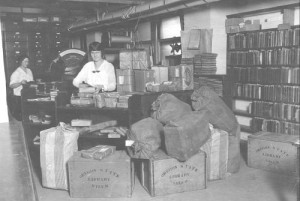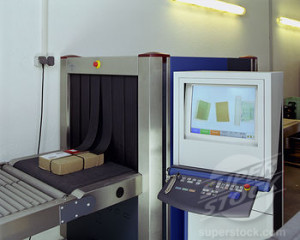Security 101: Bomb in a Box – Package Control Made Easy
Just a few days ago, we spotted the story of what happened when someone sent a joke, fake grenade to a highrise in New York. The result of that well meant gesture to someone working in that building? Well, the company that owns the building – Brookfield Properties – decided to evacuate the entire, 44 floor building. Just to be safe. For security reasons. Which is, in a word, insane. Twitter user @cgeeezy uploaded a picture of the scene that followed, and as you can see for yourself, is vastly more dangerous than a grenade in the mail room. Which is something Brookfield Properties didn’t even consider.
So how should this have been handled? After all, a bomb in the mail is one of the worst nightmares of any security manager, and there’s certainly going to be a lot of differing opinions on this… but we’re more than ready to lend some advice. Doing it our way will at least make sure you don’t create more danger than the bomb itself. Which is always embarrassing. After all, a security manager shouldn’t be more dangerous than a bomb…
1: Location, Location, Location
Every building that has more than one company needs some way to coordinate mail and deliveries.

Simply banning packages from entering just won’t work (should be obvious, but isn’t…), and having each company maintain their own mailroom and staff isn’t very budget friendly. Actually, that isn’t very security friendly either. Therefore, let’s just make the assumption that you’re going to set up a mail room. Where should you put it?
Bringing anything into the building can be risky, and that’s why many properties have mailrooms in their basements, where the building is less vulnerable (to an extent) and the effects of an explosion or a toxic spill (or biohazard) will be as small as possible.
A basement facility is generally the best choice, where it will also be easier to facilitate both large and small deliveries without the need for delivery persons entering the building itself, and easy access to loading docks and other vehicle access. That said, there are some things you should do to make sure that your mail room is as safe as it can be.
2: Securing Your New Mail Room
Building a mail room isn’t all that complicated. There are just a few things to think about, and we pretty much guarantee you that the paperwork a mailroom generates will be more complicated on a daily basis than the list we’re about to give you. Here’s what you need to do in order to have the safest mailroom in the city.

– Make sure your mail room’s walls are reinforced, and that an explosion in it won’t affect the buildings bearing structure. Simple enough for a skilled contractor.
– Make sure that the mail room’s ventilation system is separate from the rest of the building. In case it blows up. catches fire or there is some sort of biohazard in there, that ventilation should be able to be switched off or blocked off easily, either manually or automatically.
– Finally, your mail room needs to have a “green zone” and a “red zone”, sort of like an airport. The red zone is where mail and deliveries come in, and they’re then processed through screening with manual inspection and x-ray, and is then placed in the green zone for distribution to the building. Essentially, the mail in the green zone should be guaranteed to be safe for the tenants in the building.
3: Procedures and Discrimination
The clue here is PR. Making your procedures clear to the tenants is paramount, and whether you decide that all mail and deliveries must be screened, or you choose to go for a spot checking system, everyone needs to be fully aware of the regulations and be on board with them.
The most dangerous scenario is where a tenant decides to try and circumvent your procedures because they are seen as too cumbersome or discriminatory in some way. If a tenant thinks they’re being unfairly treated, i.e. their mail and deliveries are checked more or less often than the rest of the tenants’ mail, then there’s going to be trouble. Make sure that your procedure is fair, and that everyone is well informed and understand both the risks and the benefits of your system.
Also, if someone sends their mate a gag grenade, don’t empty out your building. Call the bomb squad if you feel you must, but try not to be more dangerous than the bomb itself. If you are, then you deserve that pink slip, just like the people at Brookfield.

0 thoughts on "Security 101: Bomb in a Box – Package Control Made Easy"